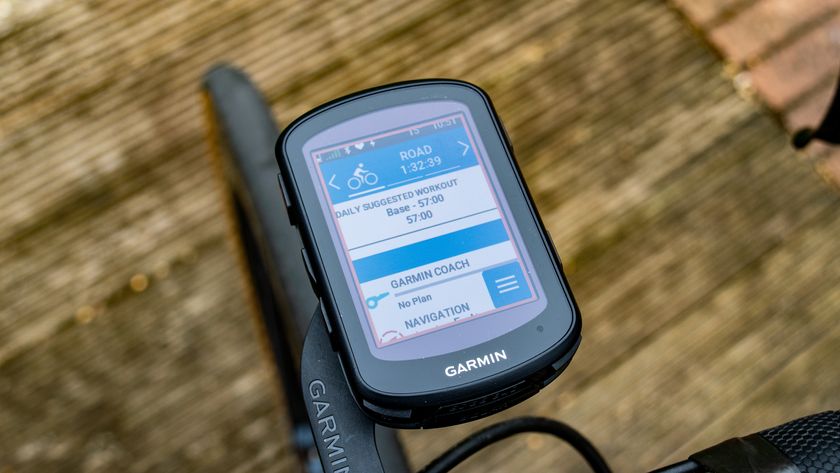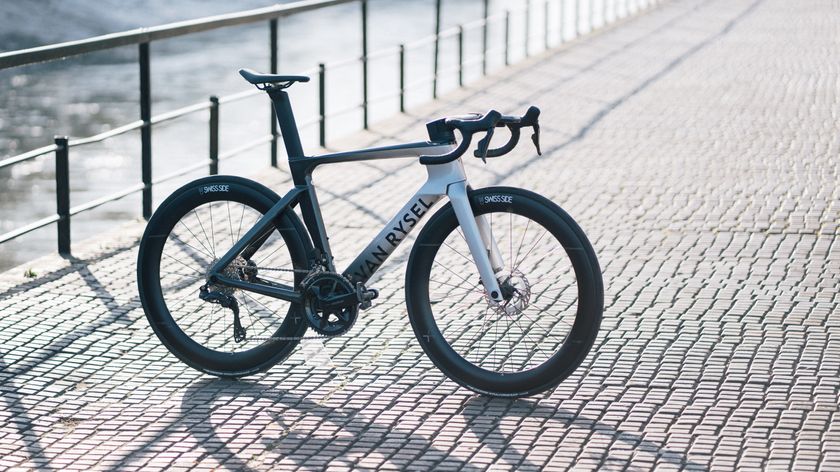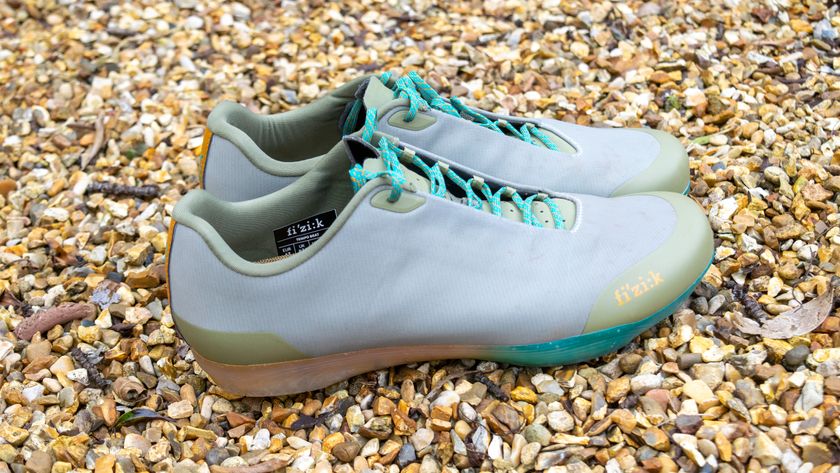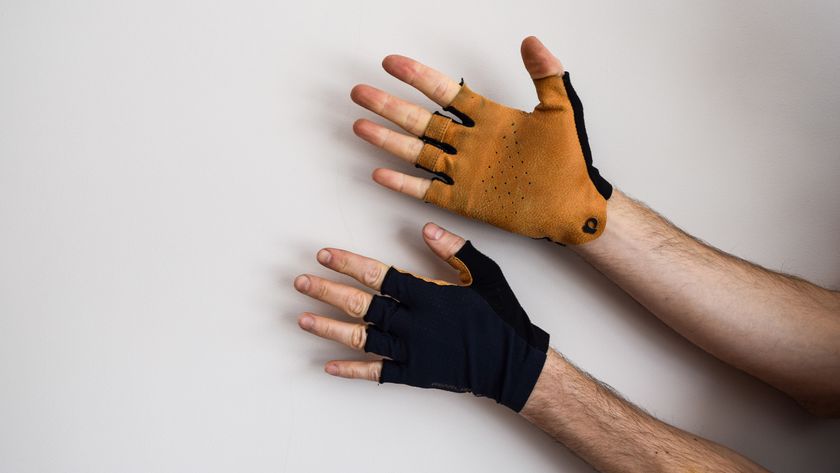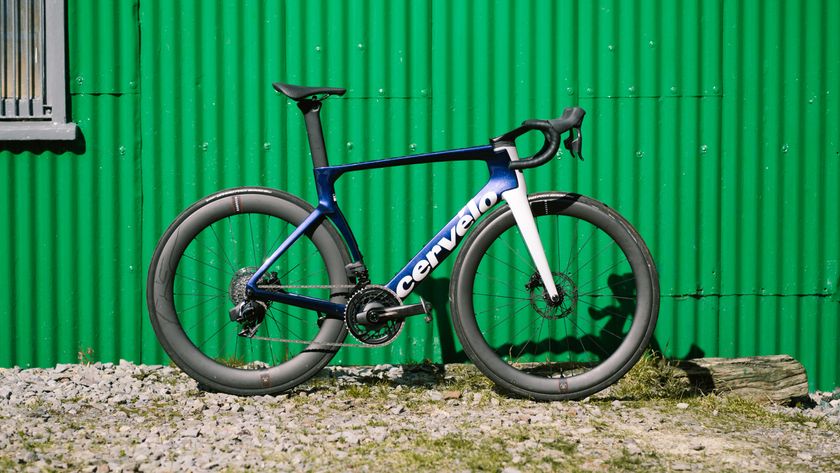You can trust Cyclingnews













This article originally published on BikeRadar
In June, BikeRadar first broke down the details on Shimano's new electric/hydraulic levers that can be paired with hydraulic brakes and a Di2 drivetrain.
At Interbike's Outdoor Demo, we had the chance to ride the system with Ultegra Di2 and were pleasantly surprised. The levers feel very similar to standard Di2 levers in ergonomics and braking performance — but with less hand force required. More recently, we've been able to spend a full three days riding them at Shimano's press camp in Sicily.
Shimano has just confirmed that the UK pricing for the R785 brake system will be £499.99. We are awaiting details on US pricing. At first blush, we prefer this hydraulic road system to SRAM's.
In detail
There's still a question of whether or not hydraulic brakes are the way forward, but the main issue that the naysayers have is that there isn't any real ‘need' for more powerful braking. Shimano understand this, so the point of these new brakes isn't improved power but better feel and consistency, regardless of conditions.
Shimano's hydraulic STI unit is significantly bigger than the standard Di2 and mechanical levers. It seems early rumours that the hydraulic hoods would be the same size were a little optimistic.
Comparisons between R785 and SRAM's hydraulic road system are inevitable, and there are a few notable differences between Shimano's hydraulic road system and SRAM's. The most obvious is the lever shape; using electric shifting frees up considerable real estate for the hydraulic internals for Shimano, while SRAM stacks its reservoir on top of a mechanical design, meaning the lever is a little bigger.
Another difference is the strategy and presentation. SRAM launched hydraulic road brakes at the top of its food chain with Red 22 (and also the lower, non-series S-700), while Shimano has begun with only a non-series R785 lever that is neither the top-level Dura-Ace or the second-tier Ultegra. Why? Shimano spokesman David Lawrence said that the company isn't yet satisfied with the product, and feels that improvements in performance, weight and finish must be made before it can be branded Dura-Ace.
In fact, this entire system is still a work in progress – the hubs and calipers are XT mountain models, and the rotors are 160mm, to be reduced to 140mm in the full production versions. Shimano has entered other categories in similar fashion before. Its first compact crank was the R700 – not an Ultegra or a Dura-Ace. And its first hydraulic mountain bike brake was an XT – not the top-of-the-line XTR.
Ride and handling
We got to experience these brakes first hand over the course of three days. The first day included a 17km descent, and our initial impressions were very similar to our first thoughts on SRAM's Red brakes. The braking was consistent, there was plenty of feel, but they did have a tendency to screech noisily once we'd built up a bit of rotor heat.
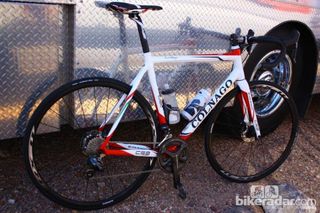
Are disc brakes the future of road bikes? It's looking that way
As the R785 system is becoming available later this year, cyclo-cross bikes will be the first to arrive with the product as original equipment. Then road bikes will begin trickling out with Ultegra Di2 and perhaps Dura-Ace Di2 and hydraulic brakes. Its potential adoption for sales as a standalone group, if it comes, will be months, if not years, away.
So are discs the future? On this and SRAM's evidence we'd suggest they are. Yes, a hydraulic road brake system is heavier than a mechanical rim caliper system. Lawrence claims Shimano's system adds roughly 300g — not including additional potential weight on the frame and the fork. And for the pros, a lot of issues need to be sorted. For the UCI there's the issue of parity across the board – it'd be dangerous for half the peloton to have the massive advantage these brakes offer.
The other issue is standardisation of equipment for neutral service. As mentioned before, our bikes ran 160mm rotors, but Shimano recommend 140s. The problem is that there aren't that many bikes with post-mount fittings to take the reduced size. Should the road follow mountain and go through-axle? Brands such as Storck, Focus and Giant, with their new CX bike, seem to think so.
With Shimano's rim brakes already quite functional, many riders and even many shop owners are asking what the point is. Shimano, as with SRAM, points to 'consistent braking across all conditions,' and 'better modulation and more power for less finger input.'
It's worth remembering how long it took mountain bike brakes to evolve to their current high-performance state. They've had more than a decade of development – for the road we reckon it'll be three to five years before we see what disc brakes are capable of. Road bikes have the advantage of the mountain bike designers doing most of the groundwork – now it's a question of adaptation and evolution.
For most of us, the positives will outweigh the negatives. Better, more consistent braking is going to make you faster and safer, and how can that be a bad thing? Ultimately you, the riders, will dictate whether this system truly takes off or if it remains a novelty.
Pros: Great ergonomics – identical with Di2 levers; reach and stroke adjustments; brake lever action feels like mechanical – but stronger
Cons: Tinny, rattling sound when riding with hands on tops (without cables, the lever head has nothing to pull it snug against the hood body); lack of standard Shimano tiered branding (it's not Dura-Ace, it's not Ultegra, so what is it?); dull finish
BikeRadar verdict: 4 ½ stars
More information: www.bike.shimano.com

